21 Wild Animals in Burundi [Wildlife in Burundi]
Want to know more about the wildlife in Burundi?
Discover 21 wild animals in Burundi in this post, as well as interesting facts about them. 🇧🇮
Learn All About Burundian Animals
Ready to learn all about Burundian animals?
I’ve always been fascinated by animals and by how they can be so different from one country to another. In this guide, we’ll focus on the many animals Burundi has on the land, in the sky, and underwater.
I’ve split the guide into 4 categories:
- Native animals from Burundi
- Endangered animals of Burundi
- What is Burundi national animal?
- How many animals native to Burundi?
Let’s dive in right away with our first category!
Native Animals from Burundi
Burundi is a landlocked African country located in the eastern part of the continent, below the Sahara. It is one of the smallest countries in all of Africa, and it used to be a German colony. It is bordered by Rwanda, Tanzania, and the Democratic Republic of the Congo, and although its biggest city is Bujumbara, its economic center is Bujumbura and its capital city is Gitega, which counts more than 135,000 inhabitants.
An interesting part of the country that I wanted to tackle is its wildlife. In light of that, I have listed the best of it, and I hope you will love learning what animals live in Burundi.
Here’s the Burundi animals list.
1. Trumpeter hornbill
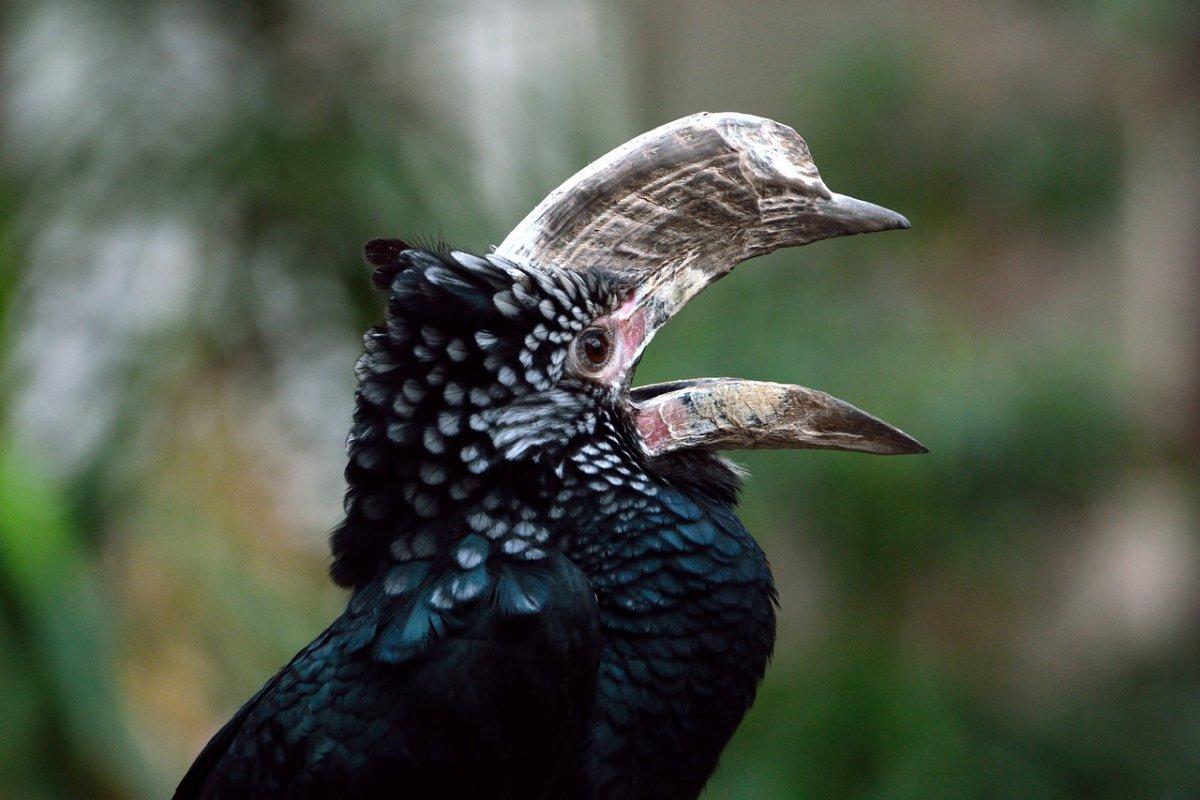
- Name: Trumpeter hornbill
- Scientific name: Bycanistes bucinator
- Conservation status:
The trumpeter hornbill is a medium-sized species of hornbill. It has a characteristic casque on top of its bill, which is larger in males. The eyes are also very recognizable, having bright pink surrounding skin.
This hornbill usually lives in groups of 2 to 5 individuals but was already seen with 50 birds. It is very common in Burundi, but also in Mozambique, Kenya, Congo, Namibia, South Africa, and Botswana.
2. Yellow-spotted rock hyrax
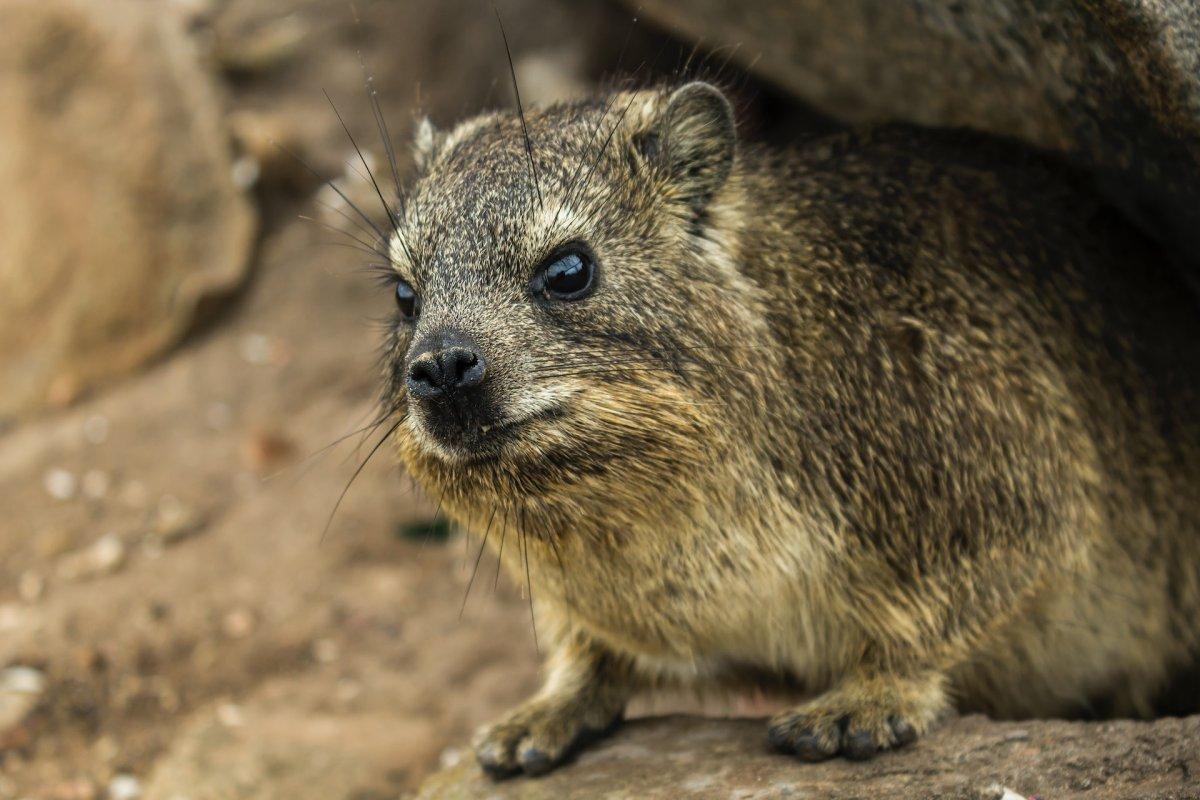
- Name: Yellow-spotted rock hyrax
- Scientific name: Heterohyrax brucei
- Conservation status:
The yellow-spotted rock hyrax is a species of mammal native to many countries of eastern Africa, including Burundi, Tanzania, and Mozambique, but also Egypt and South Africa. It inhabits rocky areas and dry savannas.
When it comes to feeding, the yellow-spotted rock hyrax is a browser, which means it eats leaves, soft shoots, and shrubs, but not grass. Also, it spends 80 percent of its foraging time browsing twigs and buds.
3. L’Hoest’s monkey
- Name: L’Hoest’s monkey
- Scientific name: Allochrocebus lhoesti
- Conservation status:
L’Hoest’s monkey, also known as the mountain monkey, is a species of monkey native to the upper east side of the Congo basin. It lives in forests and mountains and has a dark coat with a white beard.
This monkey can be found in Burundi, the Democratic Republic of the Congo, Uganda, and Rwanda. It is a herbivore that eats fruit, herbs, and mushrooms, but will occasionally feed on small birds, lizards, and eggs.
4. Black-necked grebe
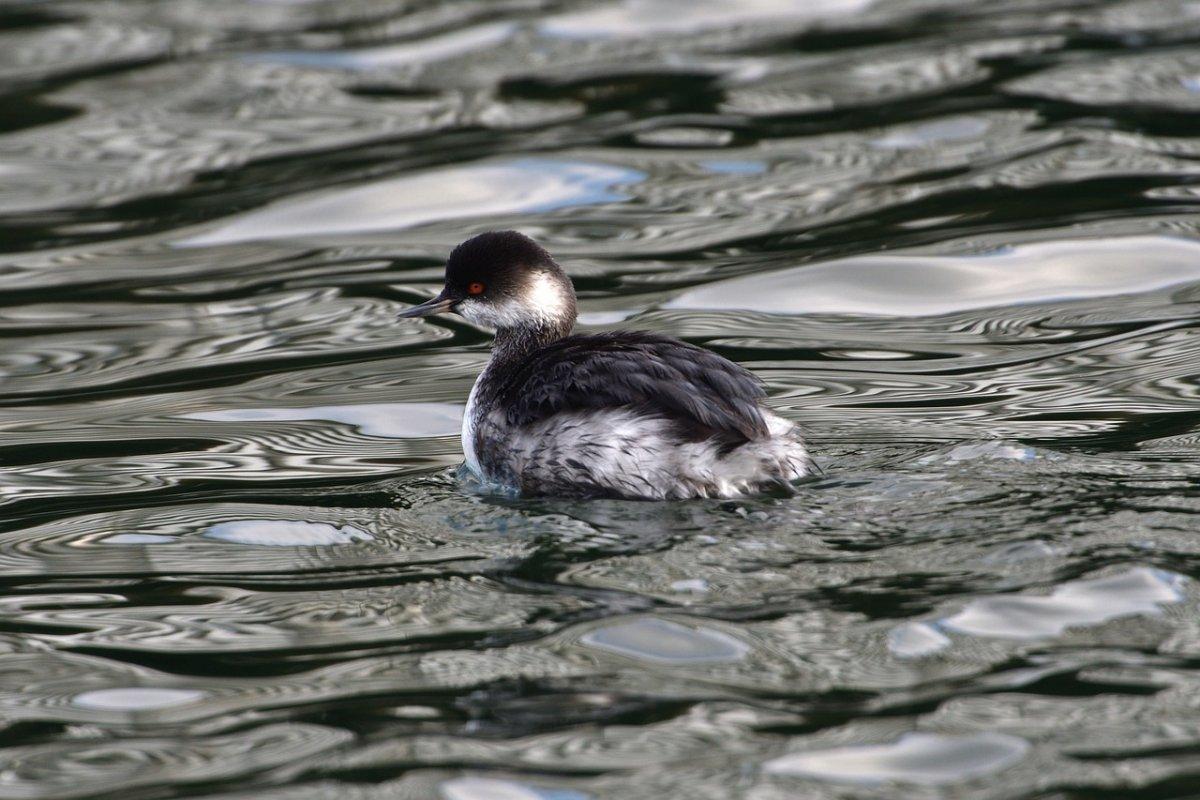
- Name: Black-necked grebe
- Scientific name: Podiceps nigricollis
- Conservation status:
The black-necked grebe, also known as the eared grebe, is a species of the grebe family. They are aquatic and diving birds that can be found in most freshwater areas.
This grebe looks very different whether it is the breeding season or not: its breeding plumage is ochre on the sides of its body and behind its head and ears, while its non-breeding plumage is mostly gray to white.
5. Brown greater galago
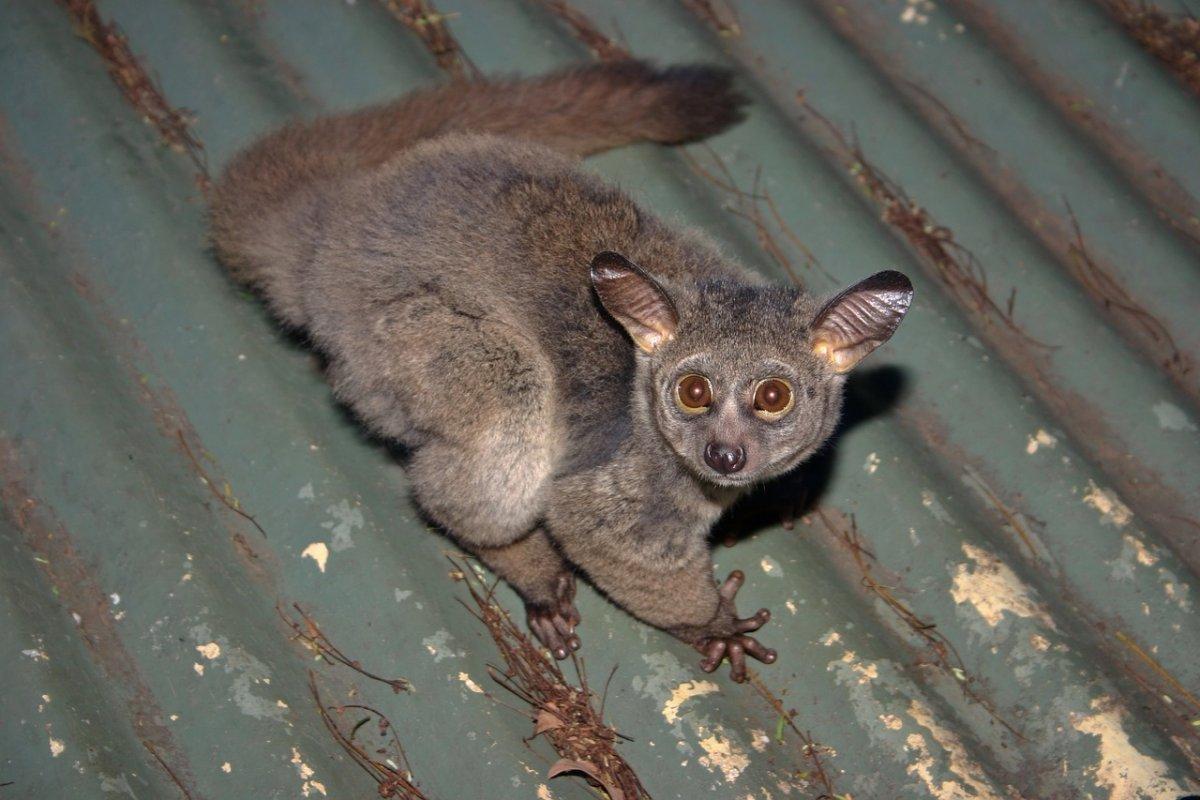
- Name: Brown greater galago
- Scientific name: Otolemur crassicaudatus
- Conservation status:
The brown greater galago, also known as the thick-tailed galago or the large-eared greater galago, is a species of galago. They are small nocturnal primates native to sub-Saharan Africa, and they are also known as bush babies.
This galago has a rounded head with a short and broad snout, as well as very large ears. It is highly arboreal and quickly moves through trees and bushes. Sometimes, it can even jump from tree to tree if necessary.
6. Greater cane rat
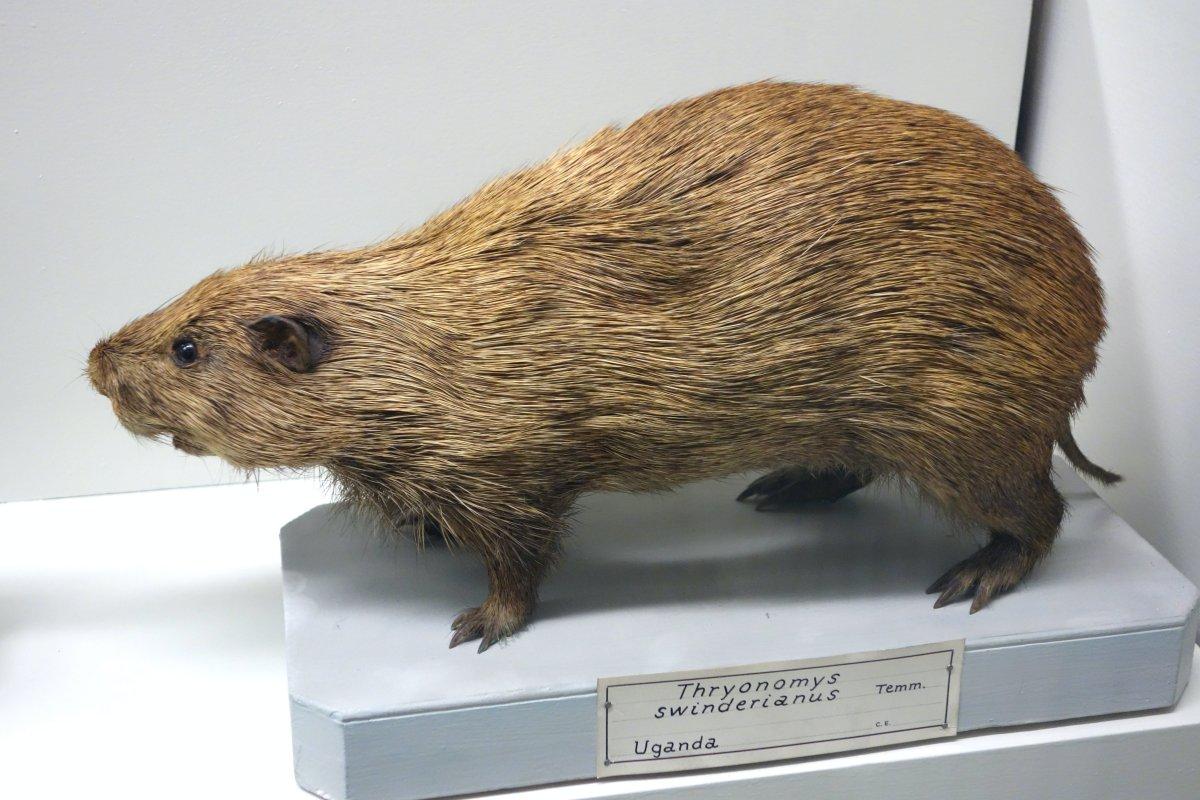
- Name: Greater cane rat
- Scientific name: Thryonomys swinderianus
- Conservation status:
The greater cane rat is one of two species of cane rats. It is a small family of African rats, and the other species is the lesser cane rat.
Though it is called a rat, you might be surprised by the size of a greater cane rat. It can reach up to 60 cm / 24 in and weigh up to 9 kg / 20 lb! It is therefore one of the largest rodents in all of Africa.
7. Bunyoro rabbit
- Name: Bunyoro rabbit
- Scientific name: Poelagus marjorita
- Conservation status:
The Bunyoro rabbit, also known as the Central African rabbit, is a species of rabbit native to central Africa. It inhabits damp savannas with rocky outcrops, though it can also be seen in woodland and forests.
This rabbit is a nocturnal animal that hides in burrows during the day and comes out at night to feed as part of a family group. It eats rice and peanut plants if living near cultivated land, and its main predators are hawks, owls, and servals.
8. Great cormorant
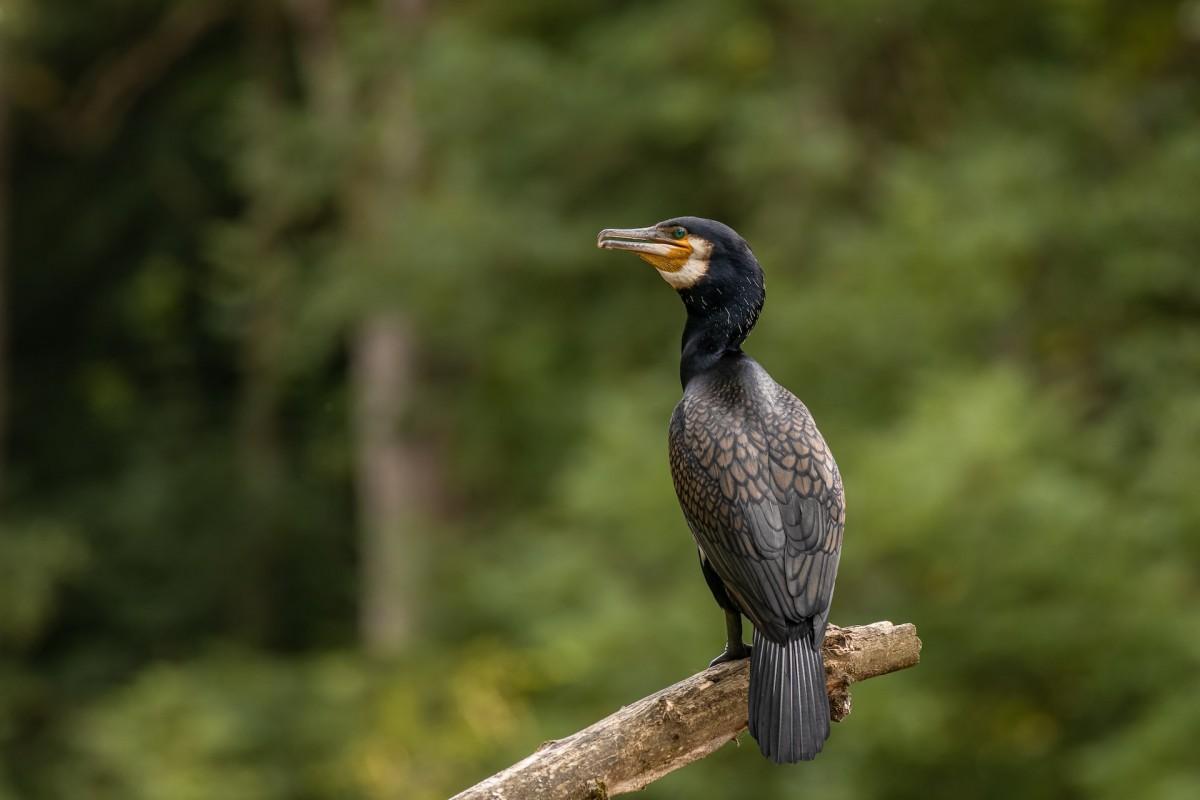
- Name: Great cormorant
- Scientific name: Phalacrocorax carbo
- Conservation status:
The great cormorant, also known as the black cormorant, the large cormorant, or the black shag, is a species of cormorant that can be found in most of eastern Africa, southern Asia, North America, Europe, and Australia, depending on the time of the year. It resides in Africa, but breeds in Asia, North America… and even Greenland!
As its name suggests, the great cormorant is a large black bird. Albinism is also possible and some white individuals exist, but they suffer from poor eyesight and hearing and usually cannot survive very long.
9. African wild dog
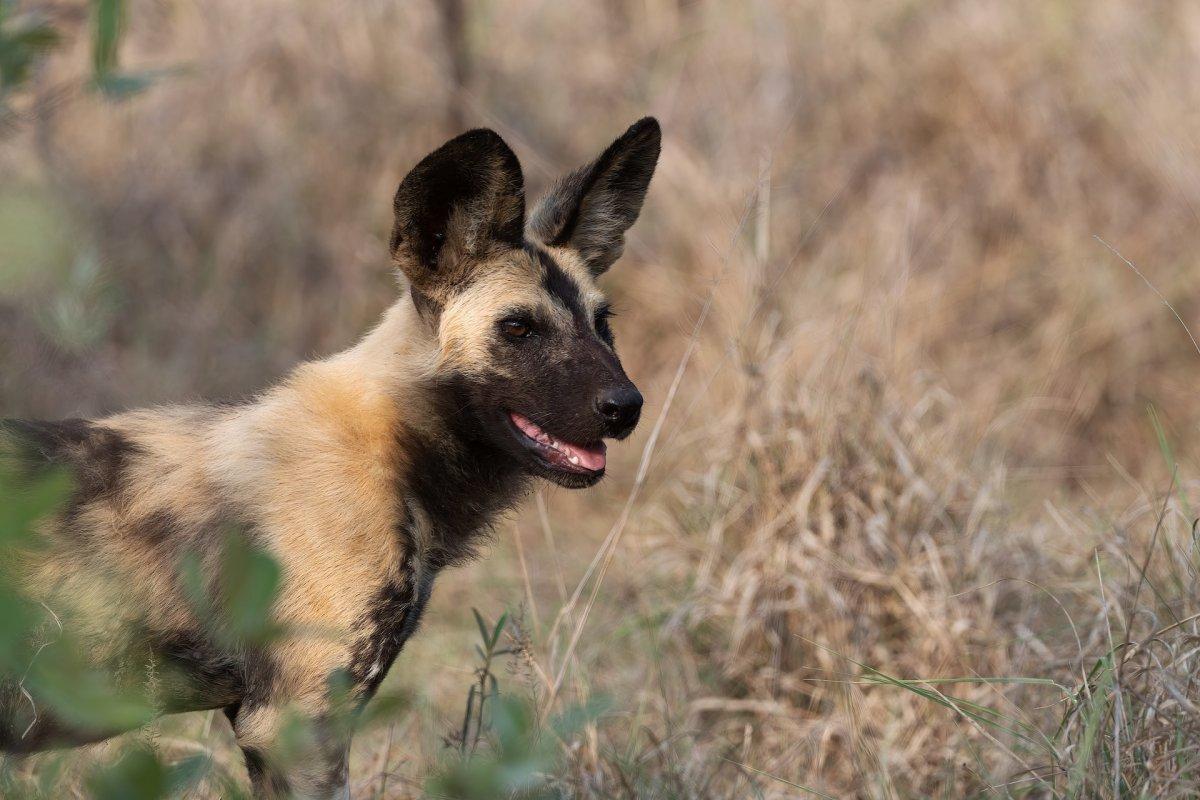
- Name: African wild dog
- Scientific name: Lycaon pictus
- Conservation status:
The African wild dog, also known as the African hunting dog or the African painted dog, is a species of wild canine native to sub-Saharan Africa. It is the largest wild canine in all of Africa and has a hypercarnivorous diet, meaning it eats at least 70 percent of meat.
Sadly, this wild dog is seriously threatened by habitat degradation and fragmentation, outbreaks of disease, and human persecution. Its biggest subpopulation is estimated to be fewer than 250 individuals.
10. African leopard
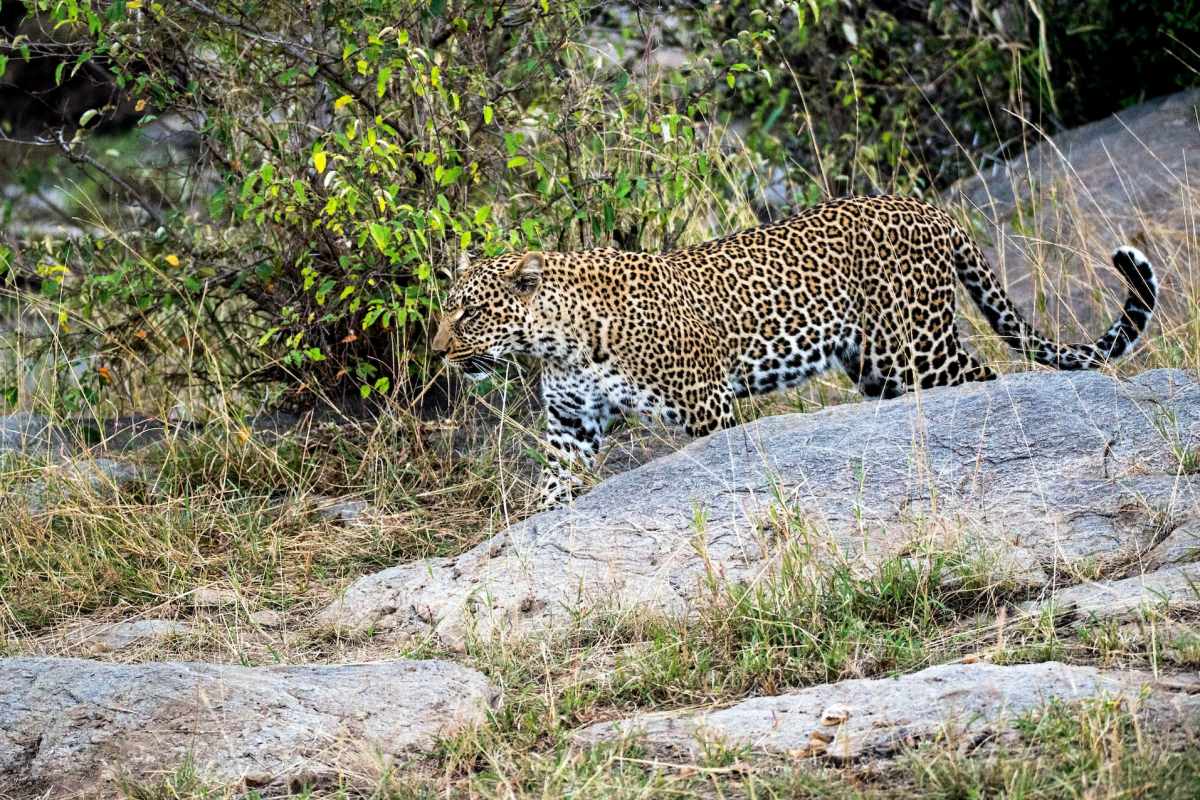
- Name: African leopard
- Scientific name: Panthera pardus pardus
- Conservation status:
The African leopard is one of the most iconic wild animals in Africa. It can be found throughout most of sub-Saharan Africa, usually in mountainous forests, savannas, and grasslands. The only area it does not inhabit is the sandy desert, though some individuals were seen as far as North Africa.
It is mostly active by night, and hunts for large ungulates such as impalas, but can also feed on hares, rodents, and even dung beetles. Usually, it drags the carcass up in the tree or abandons it where it killed it.
11. Spotted hyena
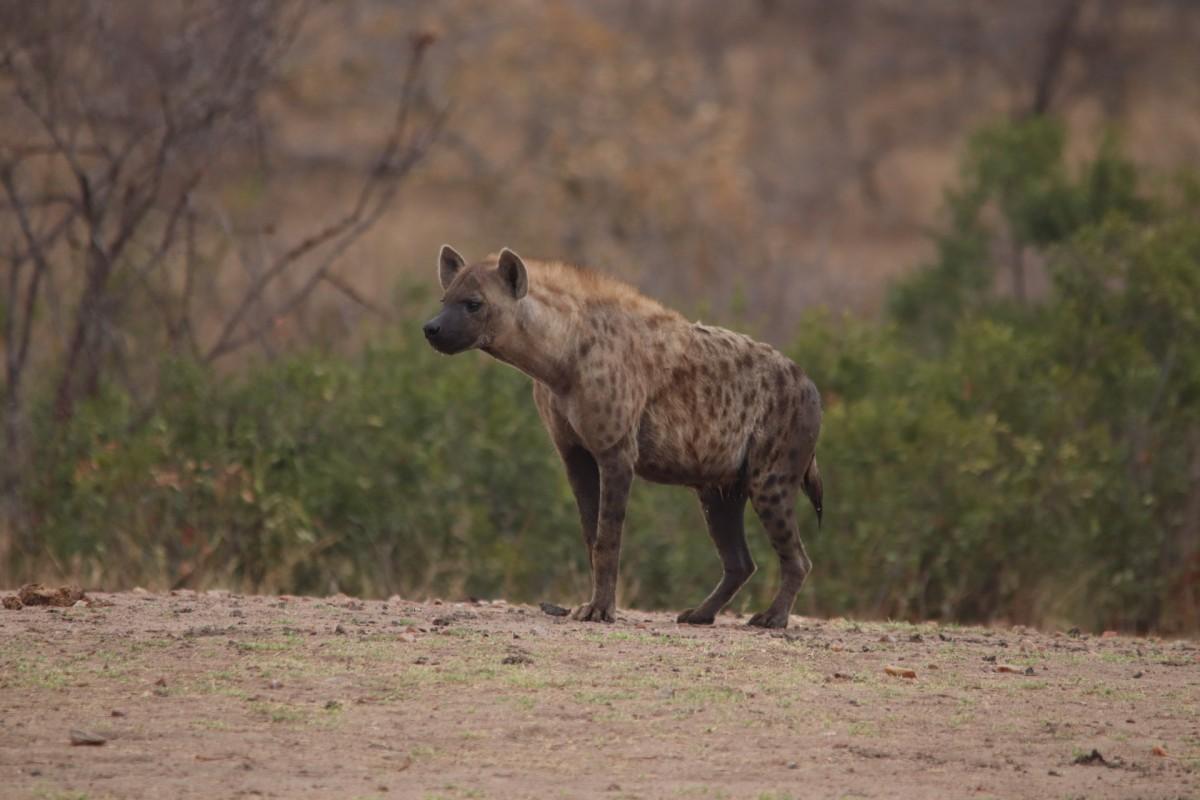
- Name: Spotted hyena
- Scientific name: Crocuta crocuta
- Conservation status:
The spotted hyena, famous for its peculiar cry that sounds like a laugh (which gave it its other name, the laughing hyena), is a species of hyena native to sub-Saharan Africa. It may have originated in Asia, and be present in Europe, but it is now only present in Africa.
It is one of the most successful large animals in Africa as a species, due to its high adaptability and opportunism. While it is mainly a hunter, it can also scavenge and eat and digest meat, skin, and bones.
12. Congo clawless otter
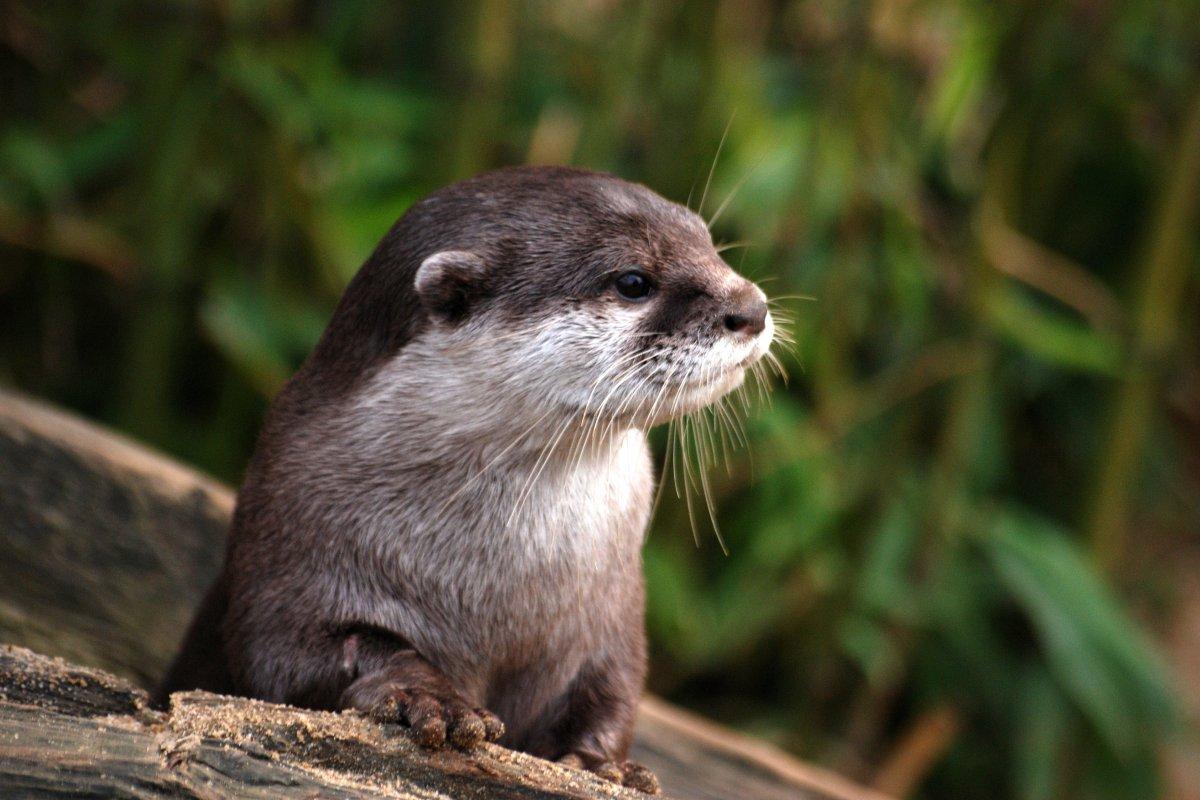
- Name: Congo clawless otter
- Scientific name: Aonyx congicus
- Conservation status:
The Congo clawless otter, also known as the Cameroon clawless otter, is a species of mustelid native to western central Africa. Outside Cameroon and Congo, it can also be found in several other countries such as Burundi, Angola, and Equatorial Guinea.
This species is very little known. It is large and has small and blunt claws. It is considered near threatened due to hunting for bushmeat and skin, as well as pollution and habitat degradation. Funnily enough, it is considered to have magical powers in some countries like Gabon, where legend says wearing otter skin can make you invisible! In other countries, it is believed to be a dangerous animal that can give electric shocks…
13. African bush elephant
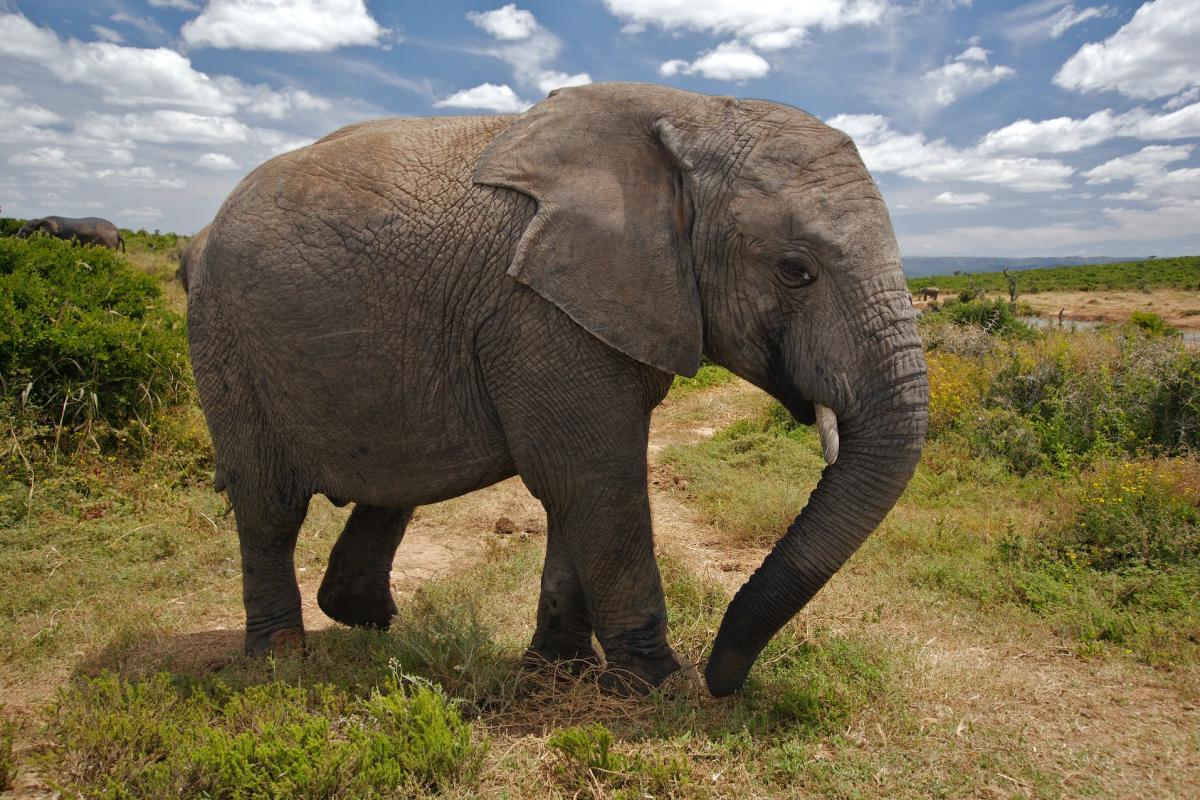
- Name: African bush elephant
- Scientific name: Loxodonta africana
- Conservation status:
The African bush elephant is one of the most iconic African animals. Though it is famous for being the largest land animal on Earth, it is seriously threatened by poaching and habitat destruction. Because of this, many conservation programs were launched in hopes to save the last individuals.
The most fascinating part of the African bush elephant is definitely its trunk. It is prehensile and has short tactile hair, which makes it highly sensitive. Believe it or not, the trunk is manipulated by around 40,000 to 60,000 muscles!
14. Chimpanzee

- Name: Chimpanzee
- Scientific name: Pan troglodytes
- Conservation status:
The chimpanzee, also known as the chimp, is a species of great ape native to tropical Africa. It inhabits savannas and forests and has coarse black hair all over its body except for the face, fingers, toes, and palms of the hands and soles of the feet.
Though it is very closely related to the bonobo, it is larger and more robust. The chimpanzee usually lives in groups of 15 to 150 members, and is one of the smartest species of monkeys, being able to use tools and modify sticks and rocks.
15. Angola colobus
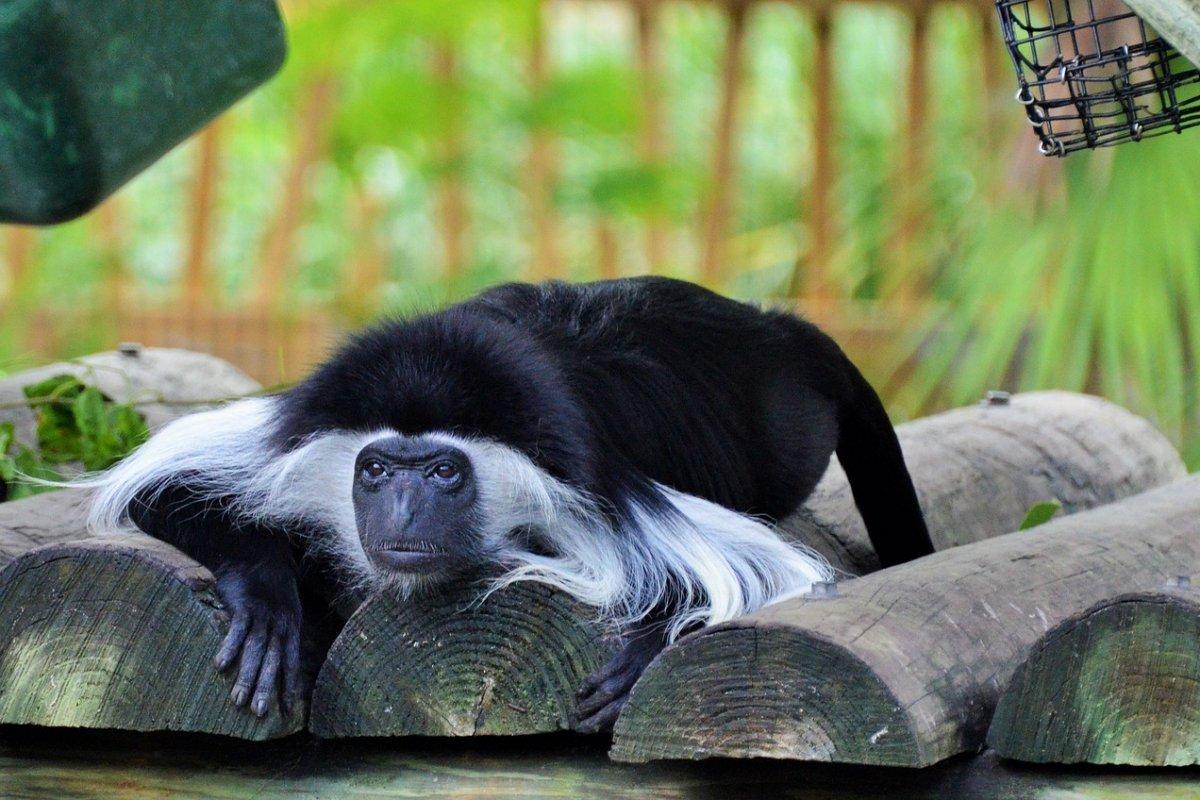
- Name: Angola colobus
- Scientific name: Colobus angolensis
- Conservation status:
The Angola colobus, also known as the Angolan black-and-white colobus, is a species of primate native to Central Africa. It lives in dense rainforests, in most of the Congo Basin, but also in Burundi, Uganda, and the Ruwenzori.
This monkey is indeed black-and-white, with black fur and a face but having long white hair all around it. It also has white hair on the shoulder and a long and thin black tail.
16. African golden cat
- Name: African golden cat
- Scientific name: Caracal aurata
- Conservation status:
The African golden cat is a species of wild cat endemic to western and central Africa. It is currently considered vulnerable due to deforestation and bushmeat hunting. Mining activities and road building also pose serious problems to this animal. There are conservation programs though, and it is forbidden to hunt the African wild cat in several countries, including Angola, Burkina Faso, the Ivory Coast, and Rwanda.
Not much is known about the behavior of African golden cats since they are extremely reclusive, solitary, and elusive. They are active at night and usually hunt on the ground, though they can climb if necessary.
17. Banded mongoose
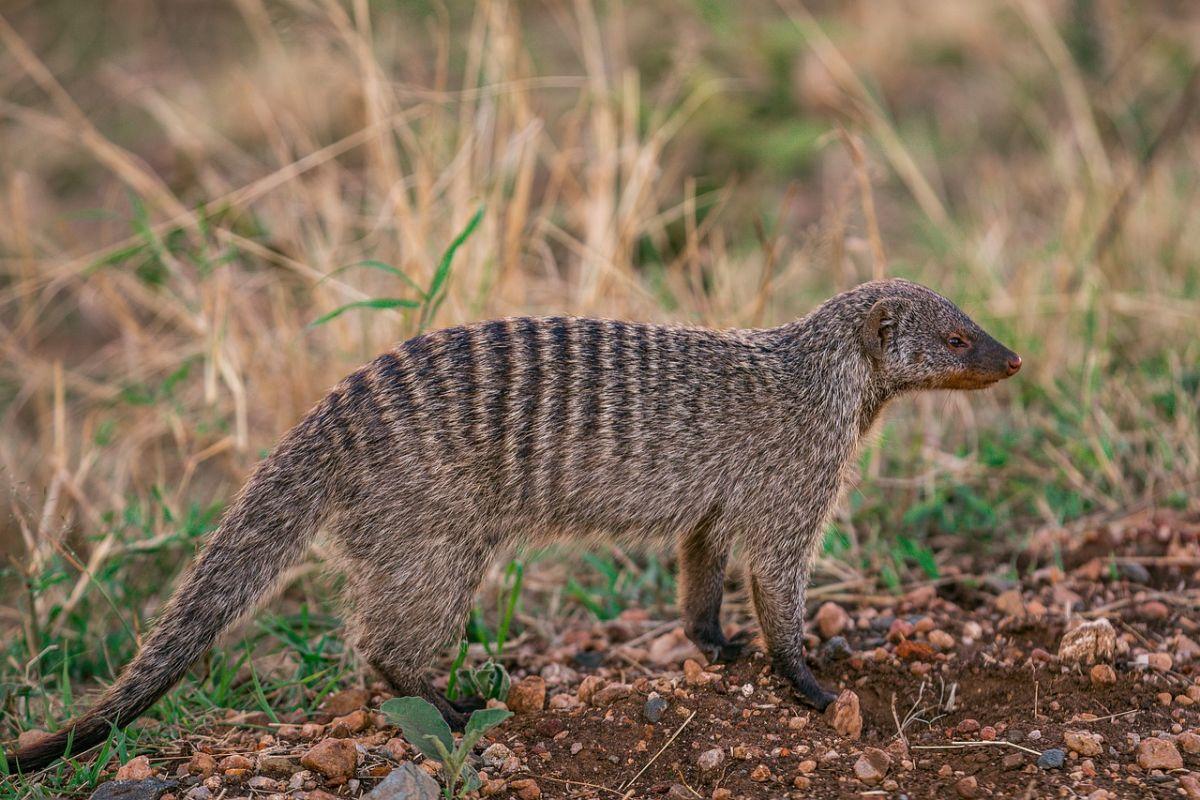
- Name: Banded mongoose
- Scientific name: Mungos mungo
- Conservation status:
The banded mongoose is a species of mongoose native to sub-Saharan Africa, from the Sahel region to South Africa. It inhabits dry savannas, open forests, and grasslands, and its diet is mostly made of millipedes and beetles.
When it comes to sheltering, the banded mongoose usually uses dens such as termite mounds. Even though most of them live solitary lives, they can be seen in colonies with a social structure.
18. Grant’s zebra
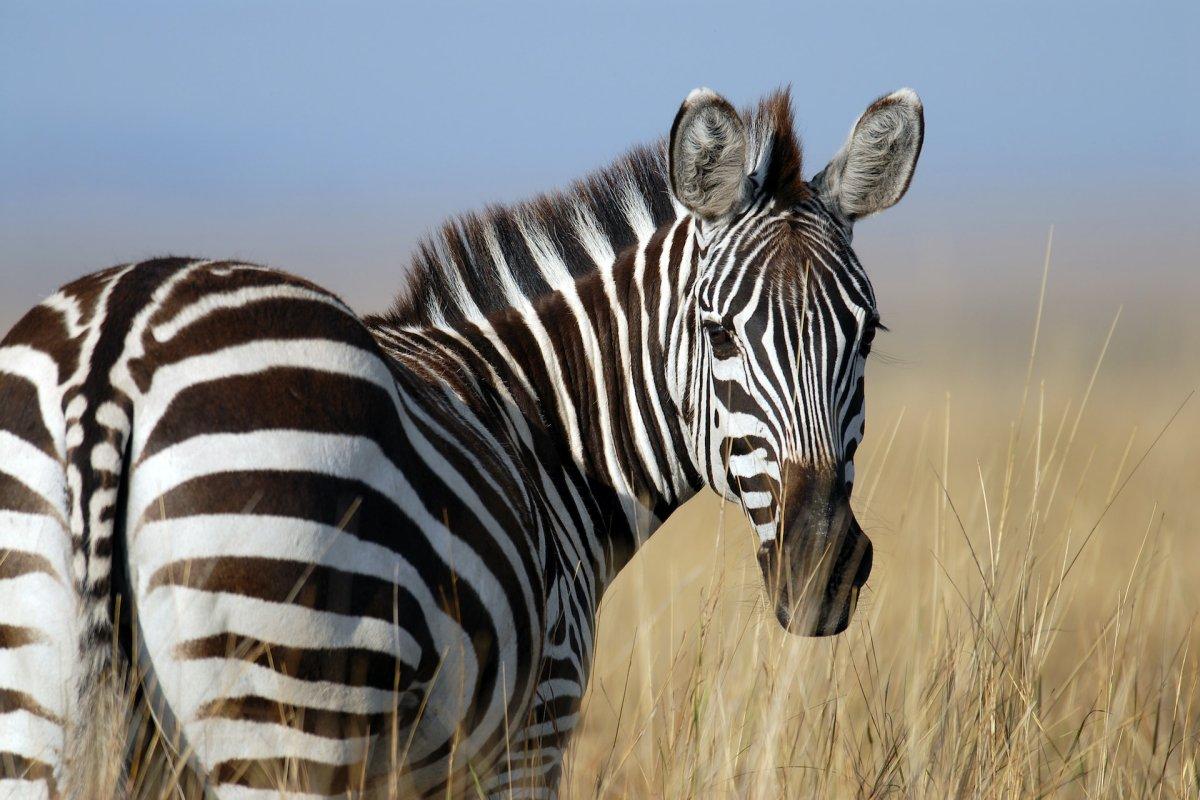
- Name: Grant’s zebra
- Scientific name: Equus quagga boehmi
- Conservation status:
Grant’s zebra is one of seven subspecies of the plains zebra. It is the smallest of them and can be found in several sub-Saharan African countries such as Zambia and the Democratic Republic of the Congo.
Due to civil wars in Rwanda, Sudan, Somalia, and Ethiopia, among other countries, the global population of Grant’s zebra has drastically declined, and it is now locally extinct in Burundi. Once abundant, this zebra is probably severely threatened with extinction.
19. Hippopotamus
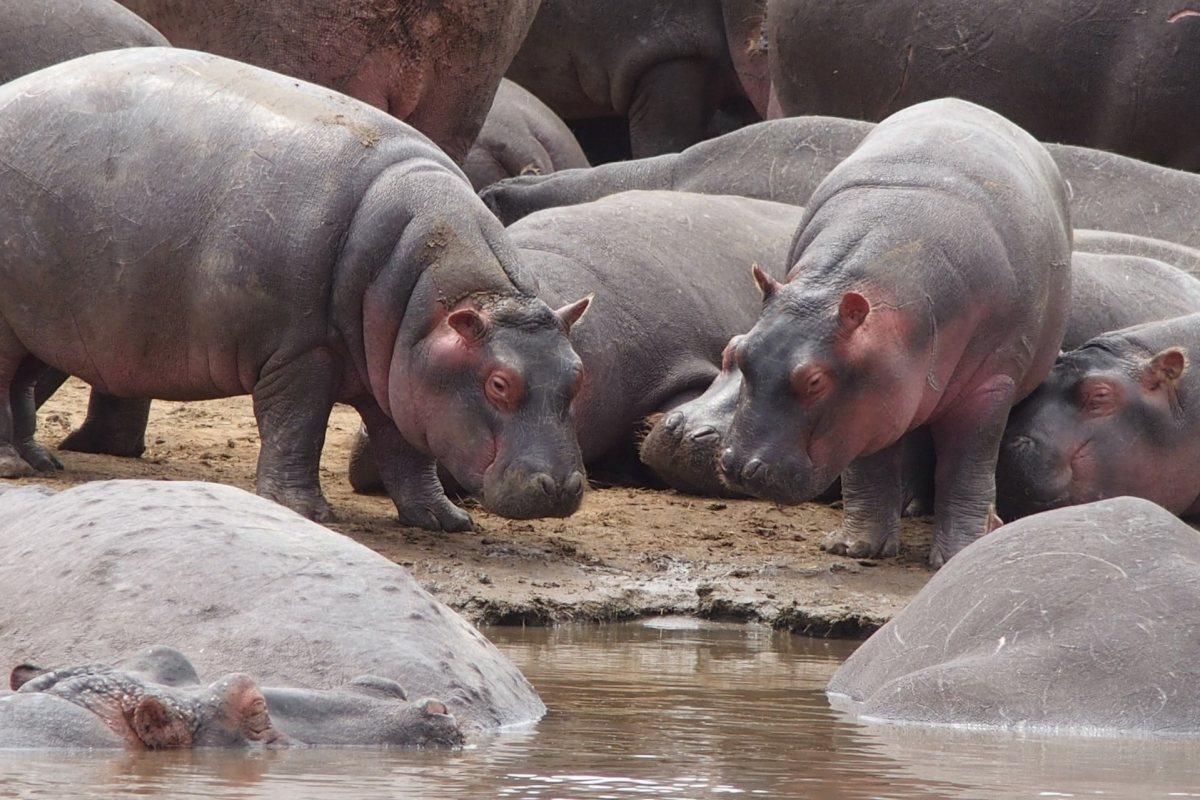
- Name: Hippopotamus
- Scientific name: Hippopotamus amphibius
- Conservation status:
The hippopotamus, also known as the river hippopotamus or simply the hippo, is a large species of semi-aquatic herbivorous mammal native to sub-Saharan Africa. It is the third-largest type of land mammal in Africa, after the elephant and the rhinoceros.
Though it mostly looks like a pig, the hippo is most closely related to cetaceans (such as whales, dolphins, and porpoises)! It lives in rivers, mangrove swamps, and lakes, as part of a group of 5 to 30 females, territorial males, and young hippos.
20. Roan antelope
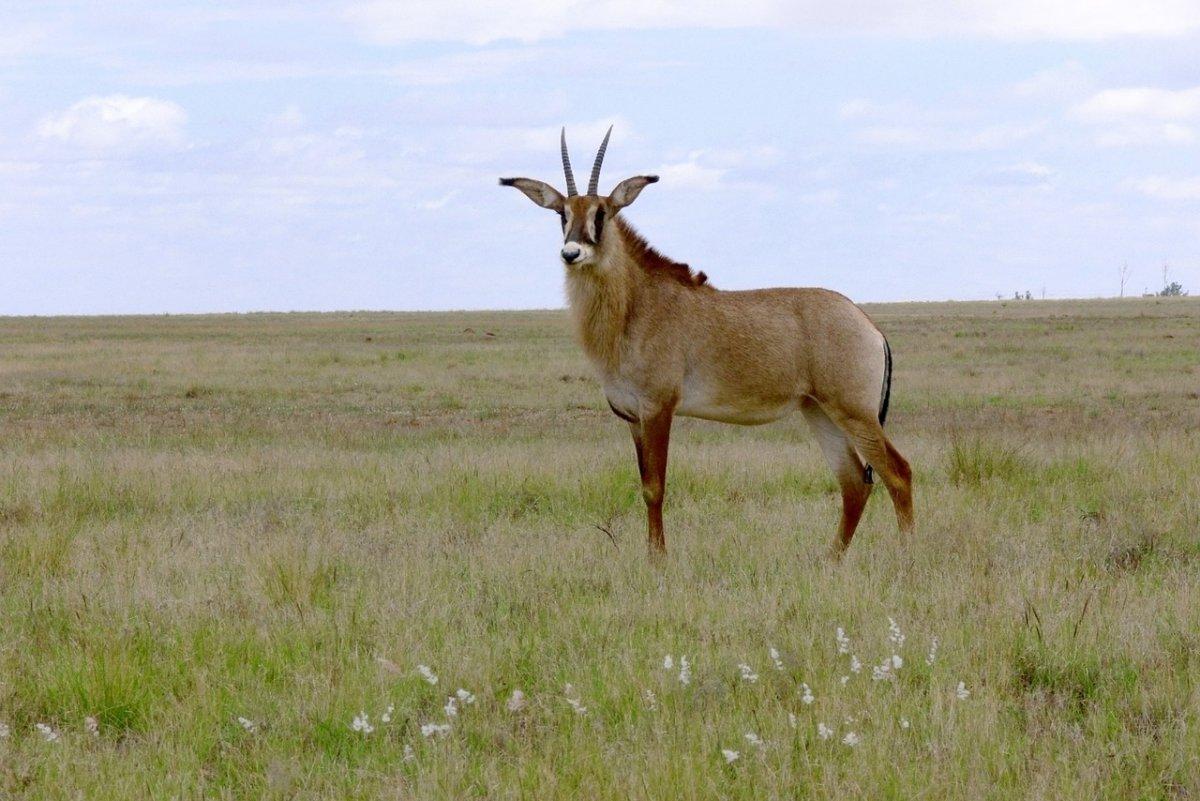
- Name: Roan antelope
- Scientific name: Hippotragus equinus
- Conservation status:
The roan antelope is a species of savanna antelope native to central, western, and southern Africa. It is one of the largest species of antelope, probably the fourth-biggest one. It can measure up to 240 cm / 94 in from the head to the base of the tail, and it has ringed horns that can reach 1 m / 3 ft 3 in long in males. Females also have horns, but they are much shorter.
21. Palm-nut vulture
- Name: Palm-nut vulture
- Scientific name: Gypohierax angolensis
- Conservation status:
The palm-nut vulture, also known as the vulturine fish eagle, is one of the few species of vulture considered of least concern. It is a large bird of prey and the only member of its genus. Usually, it breeds near bodies of water, and its range coincides with oil palm plantations, which could very well pose a serious problem in the upcoming years.
Like most other African vultures, it is easy to approach the palm-nut vulture, and it can easily be seen in large hotel lawns in touristic areas.
—
So there you have them, these were my 21 wild animals in Burundi. I hope you enjoyed this list and that you learned something new today.
In case you want to learn more about Burundi wildlife, feel free to keep reading, as I still have lots of things to tell you about:
Endangered Animals of Burundi
This is definitely the saddest part of the list, but it is very important to raise awareness. Because of this, let’s go through the list of endangered animals in Burundi.
Here are the animals in danger of extinction in Burundi.
- None
- Hooded vulture
- White-backed vulture
- White-headed vulture
- Rüppell’s vulture
- Ningu
- and 1 more…
- Chimpanzee
- Congo bay-owl
- Lappet-faced vulture
- Maccoa duck
- Madagascar pond-heron
- and 19 more…
To see the full list of endangered species in Burundi, head over to the International Union for Conservation of Nature’s Red List.
What is the National Animal of Burundi?
The national animal of Burundi is the Transvaal lion.
The Transvaal lion is a species of South African lion. The famous white lion is a subspecies of the Transvaal lion, which is named after its native region, the Transvaal. Its diet is mostly made of zebras, warthogs, buffalos, and giraffes, but also some smaller prey if it cannot find anything else.
The lion is a symbol of might, power, and victory, and has always been part of the Burundian culture and stories, which is why it now symbolizes the country as a whole.
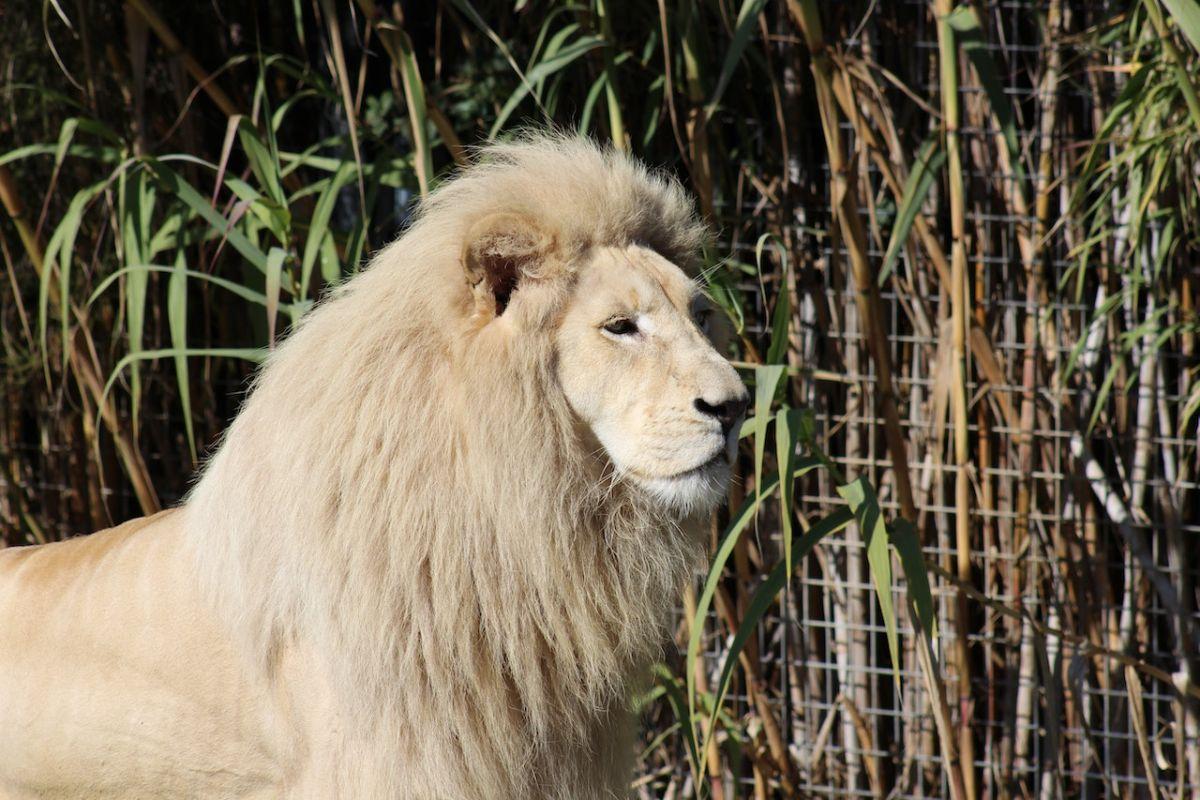
How Many Animals Native to Burundi?
What is the diversity of native animals in Burundi?
Let’s look at the total number of species of Chordata (mammals, birds, fishes, and reptiles).
Total number of animal species in Burundi: 1,194 (14,205 in total in Sub-Saharan Africa)
More About Animals in the World!
Loved these Burundi animal facts? Want to see what animals live in other countries?
Then check out these posts:
Or click here to see ALL the facts up on the blog! Spoiler alert: there’s A LOT of them.
Share the knowledge! Click on the buttons below to share information about these famous animals in Burundi with your friends, and help them learn more about the world 🙂
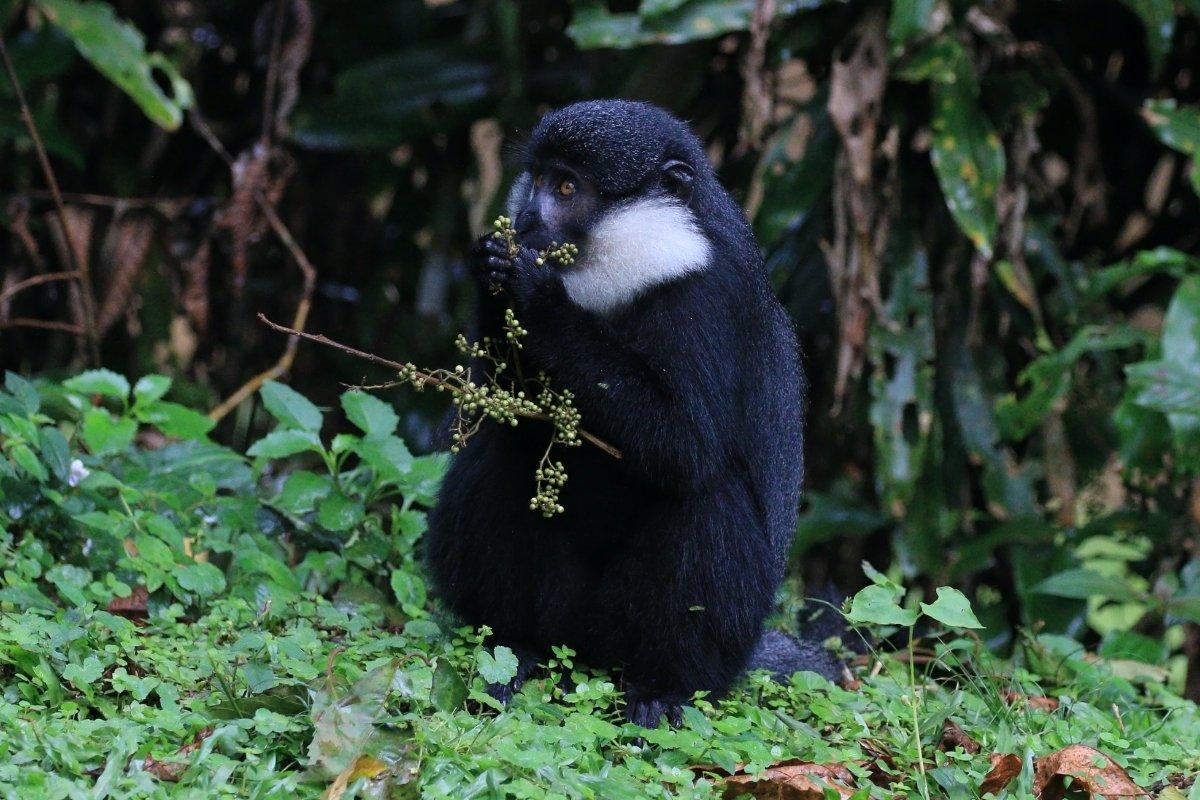
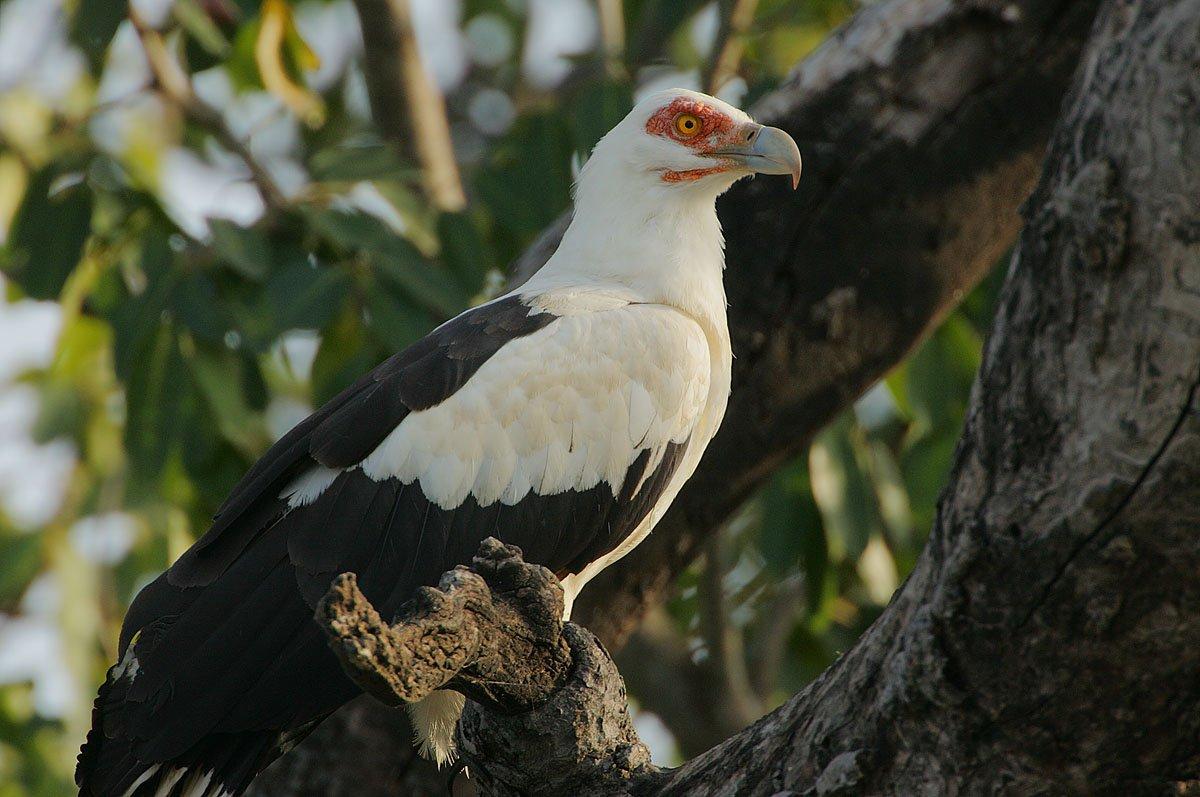

![50 Wild Animals in India [Wildlife in India]](https://www.kevmrc.com/wp-content/uploads/2022/12/50-wild-animals-in-india.jpg)
![18 Wild Animals in Zambia [Wildlife in Zambia]](https://www.kevmrc.com/wp-content/uploads/2022/11/18-wild-animals-in-zambia.jpg)
![13 Wild Animals in Jordan [Wildlife in Jordan]](https://www.kevmrc.com/wp-content/uploads/2022/06/13-wild-animals-in-jordan.jpg)